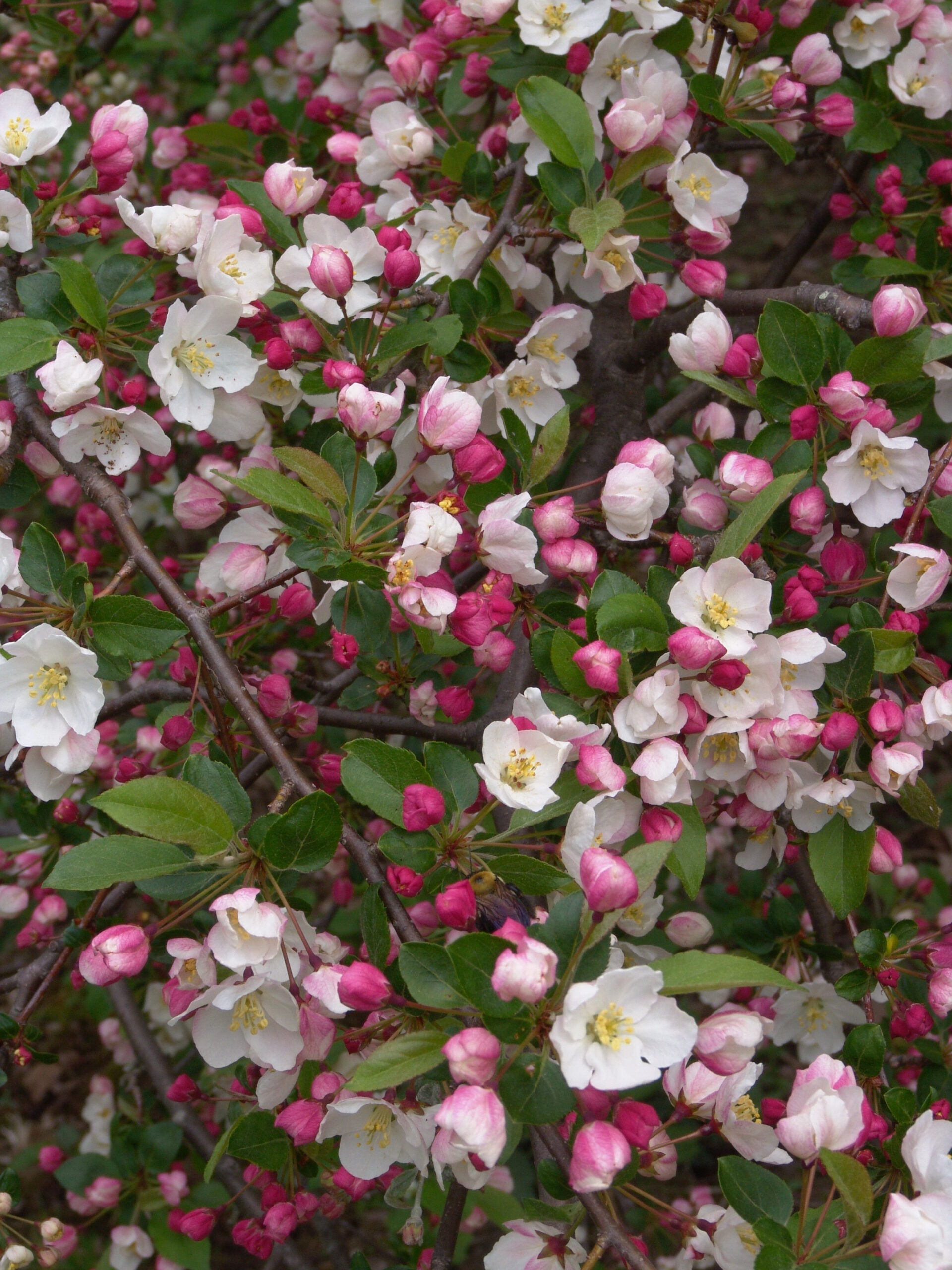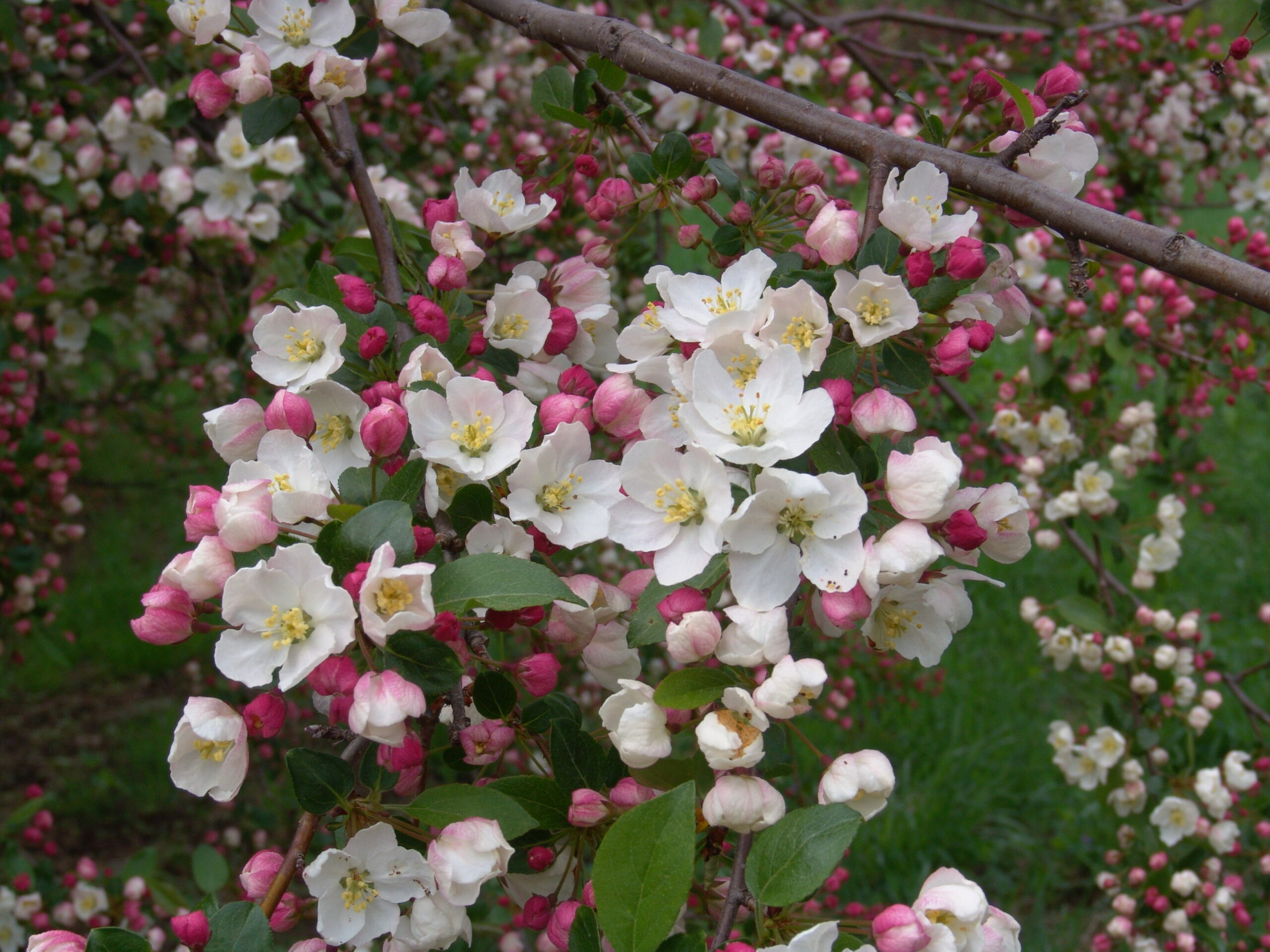‘Mary Potter’ Flowering Crabapple
Malus ‘Mary Potter’

- Accession Number
- The alpha-numeric value assigned to a plant when it is added to the living collection as a way of identifying it.
- Accession Date
- The year the plant’s accession number was assigned.
- Common Name
- The non-scientific name for the plant.
- Scientific Name
- The scientific name describes the species of an organism. The first word is the plant's scientific genus and the second is the specific epithet. This two-word binomial is sometimes followed by other taxonomic descriptors, including subspecies (denoted by "ssp."), variety (denoted by "var."), form (denoted by "f." or "forma"), and cultivar (denoted by single quotation marks).
- Plant Family
- The family to which the plant belongs.
- Propagation Material
- The first part (material code) describes the material used to create the plant. The most common codes are "SD" (seed), "EX" (existing plant), "PT" (plant), "CT" (cutting), "SC" (scion), "SG" (seedling), and "GR" (graft). The second part describes the lineage the plant is derived from. The last part describes the year of propagation.
- Collection Data
- The first part indicates provenance (place or source of origin) using a letter code ("W" = wild, "G" = garden, "Z" = indirect wild, "U" = uncertain). The second part lists the plant source. For wild-collected material, the collector, collection number, and country are given.
- Location
- The location of the plant on the landscape.
SAX, K., ARNOLD ARBORETUM
ORIG FROM ARNOLD ARBORETUM
‘Mary Potter’ crabapple is a beautiful tree with a historic pedigree steeped in Arnold Arboretum history.
Few genera in the Arnold Arboretum’s collections have as rich and continuous a history as Malus, the apples and crabapples. Explorers brought seeds to Boston from far-away places; botanists gave them new scientific names; geneticists hybridized them while horticulturists evaluated and introduced them as ornamental culivars.
Malus ‘Mary Potter’ is one of those fabled cultivars. A hybrid between a Sargent crabapple (Malus sargentii ‘Rosea’) and another hybrid (M. × atrosanguinea), ‘Mary Potter’ was created in 1939 by Karl Sax , former director of the Arnold Arboretum and Harvard professor of biology. The seed parent was the Sargent crabapple ‘Rosea’, a pink-budded and white-flowered cultivar descended from a sprawling dwarf specimen collected by Arboretum founding director Charles Sargent in Japan in 1892 . The pollen parent (M. × atrosanguinea) is larger in size and rounder in form than the Sargent crabapple, and typically produces flowers flushed or fully pink in color.
Donald Wyman, onetime horticulturist in charge of the Arboretum’s living collections, was a leading expert on crabapples. He played a central role in selecting cultivars, and in 1947, selected an individual among Sax’s 1939 seedling crop as superior in its ornamental attributes. In 1955, it was officially christened with the epithet ‘Mary Potter’ (after an earlier, tentative name of ‘Arnold Snow’). With its wide habit and white drifts of flowers, ‘Arnold Snow’ may have been appropriate. However, so was the eventual name of ‘Mary Potter’, as that was also the name of one of Sargent’s daughters.
Two trees (grafts from the original seedling) dating from the original era still grow in the Arboretum. Accession 23013*A, across from Dawson Pond, was planted in 1953. However, the finer specimen is accession 181-52*B, on the northeastern slope of Peters Hill. This individual is only about 12’ tall but stretches nearly 25’ across, branching low and hugging the slope like a slow-moving avalanche when in full bloom. Prior to full bloom, the flower buds are pink, so it is wonderful to watch the transformation go from pink to white in late April to early May. The fruits—half-inch crabapples—are bright red at maturity in early autumn.
While we marvel today at this showstopping specimen of ‘Mary Potter’ growing in this perfect spot, its early years were difficult. Fresh from Sax’s nursery, it was planted in this location in 1952, right after the renovation of the Peters Hill Orchard. In 1956, while conducting an inventory of collections, Heman Howard reported that the tree was “broken by vandals” (a common occurrence at the time). Luckily, he noted that the plant had recovered the following year. Unfortunately, a second individual (181-52*A) planted nearby did not fare as well: on the November 12, Howard noted how it had been “cut off at ground by vandals.”
Luckily, the two old trees remain safe and secure, as are several new plants from 2012 that are rooted cuttings from the Peters Hill tree.
Massachusetts
Viewing this plant in-person? Look for these defining characteristics:
About Our Collection
Fun Facts
Stats
- Living Specimens
- Specimens Dead or Removed
- First Addition
- Most Recent Addition
- Tallest Specimen



Living Specimens
| Plant ID | Accession Date | Received As | Origin | Source |
|---|---|---|---|---|




